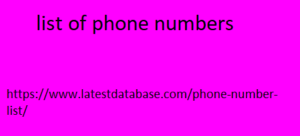Post by farjanapakhi on Feb 19, 2024 10:08:31 GMT 1
Difference between BtoC, BtoB, and DtoC In addition to CtoC, there are other words that are often used in business settings. In order to better understand CtoC, let's understand the differences. B2C BtoC is an abbreviation for "Business to Consumer" and is translated as "business-to-consumer transactions." A business model in which companies sell products and services to general consumers. (Example) Convenience store, etc. B2B BtoC is an abbreviation for "Business to Business" and is translated as "transaction between companies." A business model in which companies sell products and services to other companies. (Example) Commercial printers, etc. D2C DtoC is an abbreviation for "Direct to Consumer." sell products that they plan and manufacture in-house directly to consumers, without going through intermediaries such as wholesalers or retailers. (Example) Manufacturer direct sales EC site, etc. These three business models are characterized by the fact that the company is the seller. In contrast, in CtoC, both sellers and buyers are consumers (individuals) . Companies build platforms and monetize them through listing fees and commissions from consumers.
What is a platform? A "common foundation (standard environment)" necessary list of phone numbers to operate services and systems. Structure of CtoC business (platformer, provider, and user) CtoC-EC market size According to an announcement by the Ministry of Economy, Trade and Industry, the CtoC-EC market size in 2021 was estimated to be 2,212.1 billion yen (12.9% increase from the previous year). rillion yen 2.5% *Reference: Ministry of Economy, Trade and Industry, “ FY2021 Industrial Economic Research Commissioned Project (Market Research on Electronic Commerce) ” Market research related to commercial transactions ) Otter The market size of CtoC is still small compared to BtoC-EC and BtoB-EC. However, looking at the growth rate, it seems that there is hope for the future. Case study of CtoC platform Here, we will introduce an example of CtoC business. mercari A banner is an image that introduces another web page . Banners are often created when creating a website, so take this opportunity to deepen your understanding. So this time, we will explain the types of banners and tips for making them in an easy-to-understand manner.

Otter This article is recommended for the following people! People creating a corporate website for the first time People who want to know tips for making banners People looking for reference designs for banners After reading this article, you will be able to create banners that are easy to achieve results. Here you go! table of contents [ close ] What is a banner? Banner type Banner for homepage installation Banner for distributing web advertisements Advantages of banners 3 tips for making banners for homepage installation Create a recognizable banner Create a banner that people want to click on Create a banner that won't leave the destination web page Points to note when creating a banner for homepage installation Three tips for creating banners for distributing web advertisements Clarify the purpose of your advertisement Set the target Include a call to action Points to note when creating banners for distributing web advertisements Prepare multiple banners for distributing web advertisements for AB testing. 5 gallery sites that can help you create banners banner square retrobanner Banner.com BANNER LIBRARY banner gallery summary For those considering establishing a homepage What is a banner? Banner (English: Banner) means "flag" or "border" when translated into Japanese, and refers to an image used to introduce other web pages such as products or services.
What is a platform? A "common foundation (standard environment)" necessary list of phone numbers to operate services and systems. Structure of CtoC business (platformer, provider, and user) CtoC-EC market size According to an announcement by the Ministry of Economy, Trade and Industry, the CtoC-EC market size in 2021 was estimated to be 2,212.1 billion yen (12.9% increase from the previous year). rillion yen 2.5% *Reference: Ministry of Economy, Trade and Industry, “ FY2021 Industrial Economic Research Commissioned Project (Market Research on Electronic Commerce) ” Market research related to commercial transactions ) Otter The market size of CtoC is still small compared to BtoC-EC and BtoB-EC. However, looking at the growth rate, it seems that there is hope for the future. Case study of CtoC platform Here, we will introduce an example of CtoC business. mercari A banner is an image that introduces another web page . Banners are often created when creating a website, so take this opportunity to deepen your understanding. So this time, we will explain the types of banners and tips for making them in an easy-to-understand manner.

Otter This article is recommended for the following people! People creating a corporate website for the first time People who want to know tips for making banners People looking for reference designs for banners After reading this article, you will be able to create banners that are easy to achieve results. Here you go! table of contents [ close ] What is a banner? Banner type Banner for homepage installation Banner for distributing web advertisements Advantages of banners 3 tips for making banners for homepage installation Create a recognizable banner Create a banner that people want to click on Create a banner that won't leave the destination web page Points to note when creating a banner for homepage installation Three tips for creating banners for distributing web advertisements Clarify the purpose of your advertisement Set the target Include a call to action Points to note when creating banners for distributing web advertisements Prepare multiple banners for distributing web advertisements for AB testing. 5 gallery sites that can help you create banners banner square retrobanner Banner.com BANNER LIBRARY banner gallery summary For those considering establishing a homepage What is a banner? Banner (English: Banner) means "flag" or "border" when translated into Japanese, and refers to an image used to introduce other web pages such as products or services.
